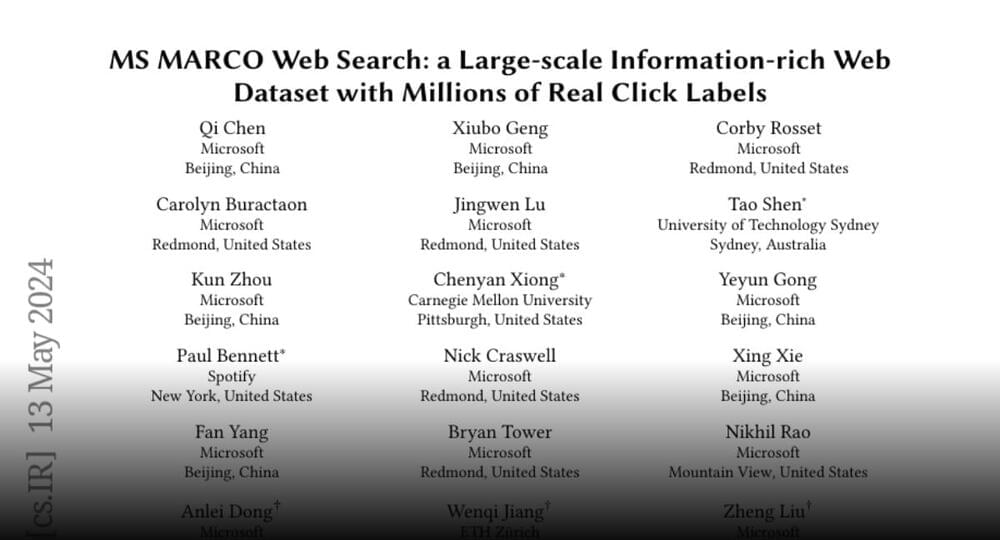From Microsoft MS MARCO Web Search: a Large-scale Information-rich Web Dataset with Millions of Real Click Labels.
From Microsoft.
MS MARCO Web Search: a Large-scale Information-rich Web Dataset with Millions of Real Click Labels.
Recent breakthroughs in large models have highlighted the critical significance of data scale, labels and modals.
Join the discussion on this paper page.


